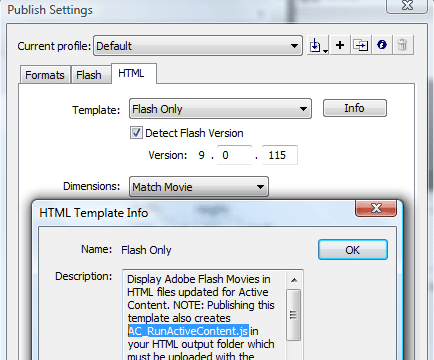- Get A Free Mac Laptop
- Ac_runactivecontent Js Free Mac Downloads
- Free Mac Computer
- Ac Runactivecontent Js Free Download
- Ac Run Active Js

May 21, 2014 How to use the Q & A Forum responds with the 'requires ACRunActiveContent.js' In the leftmost column, the last item, Free Photoshop Tips, when opened, ALL of the items respond with 'requires ACRunActiveContent.js' Two years ago, when I took a course from these folks, I had no problem accessing any of these files. It works fine if I don't install the ACRunActiveContent 'fix' from Adobe. However, once I place the javascript in my code, it doesn't load. This is my layout.

- Permission analysis allows administrators to assess the access rights situation within the network across all resources. SolarWinds® Access Rights Manager (ARM) provides a central view of group memberships from the Active Directory®, and file server and Exchange® access rights.
- Free download page for Project Ragna Ice's ACRunActiveContent.js.Servidor de Ragnarok Online!
- Looks like no one’s replied in a while. To start the conversation again, simply ask a new question.
Why SWFObject is better than AC_RunActiveContent.js for flash embedding
Some advantages of using SWFObject over Macromedia’s AC_RunActiveContent.js approach (that most places don’t talk about):
Get A Free Mac Laptop

Ac_runactivecontent Js Free Mac Downloads
- SWFObject degrades gracefully. If flash isn’t detected, the “flashcontent” div element never gets replaced with the flash object script. This being the case, you can use xhtml compliant code that’s far cleaner and more robust than anything Macromedia supports out of the box. Interestingly, Macromedia doesn’t even support alternative content when their implementation is called using the jscript. They allow a <noscript> content area, but in that case you’re limited to only having a replacement <img> instead of full-blown replacement content.
- SWFObject entails terser code. When using SFWObject, you’re only placing/calling your flash script once instead of multiple times. Notice, for example, that Macromedia requires the flash object to essentially be placed twice, thereby duplicating your work outright. Needless to say, SFWObject’s code implementation is far more elegant and much easier to maintain.
- SWFObject contains an efficient and robust framework that has extensive functionality built right in. As it stands, Macromedia’s implementation has no (or at least an extremely cryptic) method for doing things like, for example, passing flash argument variables. In fact, a quick glance at Macromedia’s AC_RunActiveContent.js file shows that their rendering mechanism is proprietary to the point of absurdity. Case in point, notice Macromedia’s AC_FL_RunContent() function for generating the <embed> object – if that’s not ad hoc, I don’t know what is. Dirty, cumbersome, and the perfect example of unnecessary overhead that bars anything from being readily transparent or extensible.
- And, of course, all of the regular advantages.
Some caveats:

- SWFObject doesn’t work if/when javascript is disabled. I personally consider this a small point, but it’s still a valid shortcoming. Of course, it seems to me that browsers that are running without javascript enabled are likely to be running without flash enabled, either; this is hardly the sort of crowd that most web applications (relying on flash, nonetheless) have to cater to. Incidentally, Macromedia’s approach doesn’t suffer this setback given their use of <noscript>.
Free Mac Computer
EXAMPLE

Ac Runactivecontent Js Free Download
Anyone familiar with Macromedia’s suggested method for deploying a flash component will find the following typical:
Ac Run Active Js
Using SWFObject, one can replace the above using about 1/4 the code: